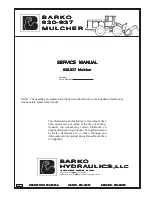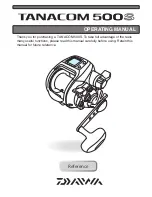
10
Instructions for use
|
Dräger SPC 4700
|
Transport
1. Leave the contaminated area and have the chemical protective suit
precleaned with the aid of a helper. The helper must also wear protective
clothing, and breathing apparatus where necessary. For precleaning,
Dräger recommends using plenty of water to which a detergent has been
added. This will sufficiently wash away most chemicals (acids, alkalis,
organic and inorganic chemicals). Avoid spreading chemicals.
2. In the event of contamination with hazardous substances, dispose of the
waste water in line with the relevant waste water disposal regulations.
4.4.2
Removing the chemical protective suit
WARNING
Risk of contamination!
►
Only take off the chemical protective suit in a non-contaminated area.
1. Get a second person to open the cover flap and the zip.
2. Take off the upper part of the chemical protective suit, down to the hips.
3. Close the external compressed air supply.
4. Open the hook-and-loop strap on the input tunnel.
5. Disconnect the compressed air hose of the external air supply from the
ventilation vest and remove from the suit.
6. Take off the chemical protective suit completely and discard.
7. Take off the ventilation vest and clean it in accordance with its instructions
for use.
5 Transport
Transport the chemical protective suit in its original packaging.
6 Storage
Store the chemical protective suit in a dark, cool, dry and airy place without
pressure or stress and in its original packaging. Keep out of UV light and direct
sunlight; avoid ozone. Observe the permitted storage temperature (see
chapter 8). If the chemical protective suit is not used and the storage conditions
are adhered to, the chemical protective suit has a life span of ten years.
Observe the different expiry dates of the components.
CAUTION
If the storage conditions are not observed, the chemical protective suit may be
damaged!
7 Disposal
The chemical protective suit must be disposed of in accordance with the
applicable waste disposal regulations. The chemical protective suit can be
disposed of thermally or on waste dumps. The form of disposal depends on the
contamination.
8 Technical
data
8.1 General
8.2
Whole suit test performance
8.3
Permeation data for liquids (EN ISO 6529,
method A)
The suit
SPC 4700 CPM
has passed the permeation test with the below
chemicals:
The suit
SPC 4700 CLF
has passed the permeation test with the below
chemicals:
8.4
Resistance to liquid penetration (CLF and
CPM)
The tests were performed in accordance with ISO 6530.
Suit material
CPM or CLF
Gloves
Ansell AlphaTec
®1)
02-100 or Camatril
®
730
2)
1)
AlphaTec is a registered trademark of Ansell Ltd.
2)
Camatril is a registered trademark of KCL GmbH.
Weight
CPM approx. 800 g
CLF approx. 1000 g
Size
See page 2, figure B
Temperatures
in usage
+10 °C to +60 °C
In storage
-15 °C to +25 °C
Test method
Test
result
Type 3: Jet test (EN ISO 17491-3:2008)
passed
Type 4: High level spray test (EN ISO 17491-
4:2008, Method B)
passed
Type 5: Particle aerosol inward leakage test
(EN ISO 13982-2)
passed
L
jmn,82/90
≤
30
%; L
S,8/10
≤
15 %
Type 6: Low level spray test (EN ISO 17491-
4:2008, Method A)
passed
Sub-
stance
Mate-
rial/seam
s
EN/ISO
class
Camatril
gloves
EN/ISO
class
Visor
EN/ISO
class
Break-
through-
time
(min.)
Break-
through-
time
(min.)
Break-
through-
time
(min.)
Sodium
hydrox-
ide (liq-
uid) 40 %
> 480
6/4
> 480
6/4
> 480
6/4
Sul-
phuric
acid 96
%
> 480
6/4
> 480
6/4
57
2/2
Sub-
stance
Mate-
rial/seam
s
EN/ISO
class
Lami-
nate
gloves
EN/ISO
class
Visor
EN/ISO
class
Break-
through-
time
(min.)
Break-
through-
time
(min.)
Break-
through-
time
(min.)
Acetone
> 480
6/4
> 480
6/4
> 480
6/4
Methanol > 480
6/4
> 480
6/4
> 480
6/4
Chemical
Penetration index
Repellency index
Butan-1-ol, undiluted
0,0 %
95 %
o-Xylene, undiluted
0,0 %
95 %
Caustic soda 10 %
0,0 %
95 %
Sulphuric acid 30 %
0,0 %
95 %
Содержание SPC 4700
Страница 1: ...Dr ger SPC 4700 Instructions for use de en fr es it nl da pl zh ja...
Страница 43: ......











































